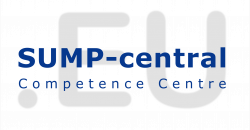Masterplan Public Transport (Nahverkehrsplan Stadt Leipzig)

City: Leipzig
Audience: Large City, FUA
Topic: Integrated Planning
Step in the SUMP cycle: Step 1: Set up working structures
More Information:
Masterplan Public Transport
Activity description
The “Masterplan Public Transport” (Nahverkehrsplan der Stadt Leipzig, 2. Fortschreibung) is an informal planning instrument to make the existing SUMPS more concrete in the topic of public transport. It is a good example for concretise one certain aspect, in this case public transport, by using the method described in the SUMP cycle. The city council approved the plan end 2019. The plan has a scope until year 2024. According to SUMP cycle the plan based of an evaluation of the last “Masterplan Public Transport from 2007. Here an evaluation took place to find out need for action. In the city of Leipzig a working team exist and there is a close cooperation between the public transport provider and the city administration. The plan followed the phases of analysis of current situation and builded up on challenges and trends, vision and forecast also relate to general SUMP and in the actual plan of the sustainable development scenario. The main focus is on concrete goals and actions for public transport. The goals are:
• Public transport as part of integrated transport system in a growing city
• Increase Modal Split of PT up to 20% until 2024
• Increase the capacity of Tram and Bus network
• Increase access to Public transport system
• Fasten Public transport and give them priority towards MIT
• Increase multimodality
• Decrease Emissions
• Ensure financial stability
To fulfill the goals the Masterplan Public Transport sets conditions e.g. 80% of inhabitants should have a 300 m distance to next Public transport stop or a fixed defined frequencies of 10 to 15 min. The plan consists of concrete actions for new infrastructure, vehicles, new systems for Public transport itself but also widens the view of other aspects e.g. mobility management, traffic management, intermodal offers, public participation and so on. Moreover it includes the need for studies for a long term perspective. Stakeholder were engaged directly in the beginning. The associations surrounded cities and districts are involved through participation instruments. Moreover the general public (citizens, NGOs, associations etc.) has been involved in several steps: Before starting development of plan (2016): Round table to present the evaluation results of last plan. First Draft (2018): Information about content of plan. Formal participation process of all relevant public organisation (“Träger öffentlicher Belange”). About 450 suggestions have been taken in consideration by creating the final version.
Lessons learned
The evaluation of the last Masterplan Public Transport helped to find needs of actions. Public participation helped for adjusting the plan and increased acceptance. Key factor: joint development with stakeholders esp. with city, transport association and public transport company.
